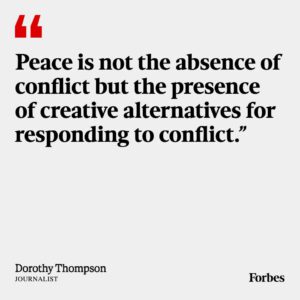 With tensions currently running high in the world, this quote made me wonder as a mediator and a proponent of conflict resolution what unconventional approaches that I would propose to sidestep the usual arguments or standoffs:
With tensions currently running high in the world, this quote made me wonder as a mediator and a proponent of conflict resolution what unconventional approaches that I would propose to sidestep the usual arguments or standoffs:
Swap Roles
It sounds odd, but stepping into someone else’s shoes can spark empathy and reveal blind spots. If you’re clashing with a coworker over a project direction, say, “Okay, for the next five minutes, I’ll pitch your idea like it’s my own, and you do mine.” It can turn a fight into a weirdly collaborative experiment.
⁉️ Ask an Absurdly Big Question
Derail the conflict by zooming way out. You could ask for instance, “If we were stranded on a desert island, how would we divide up responsibilities then?” It’s playful, but it also puts the petty stuff in perspective and can lead to a more meaningful conversation.
Gamify to leave your ego behind
If you’re at loggerheads with someone, suggest a quick round of rock-paper-scissors to decide who gets to speak first, or flip a coin to pick a compromise. It’s not about avoiding the issue—it’s about breaking the deadlock with a bit of randomness so you can move forward without ego getting in the way.
Humor = Diffuser
One of my favorites: instead of diving into a heated debate, share a funny observation about the situation. It can shift the energy and give everyone a moment to breathe. For example, if someone’s upset about a missed deadline, you might say, “Well, I guess we’re inventing a new calendar where ‘tomorrow’ means ‘next week’!” It’s not about dismissing feelings but giving a small window to reset.
Of course each of these approaches depends on the context and the people involved—what works with your boss may not work with the President of the USA —but they all aim to shift the dynamic away from “me vs. you” and toward something more collaborative, reflective, or even absurdly fun. The key is staying open to the moment and not forcing an outcome.



